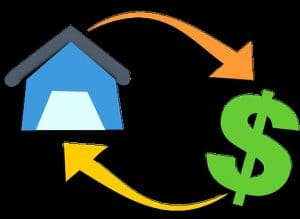When it comes to mortgage loans, you are probably more familiar with a traditional mortgage, but a reverse mortgage may be a more favorable option for senior homeowners. While there are similarities between the two loans, there are also some key differences that may be beneficial for senior homeowners who are looking to improve their current financial situation.
What is a Traditional Mortgage?
A traditional or “forward” mortgage is typically used to purchase a new home or refinance a current loan. In most situations, a borrower will make a down payment of about 5-20% of the home’s value. The borrower will then take out a traditional mortgage to cover the remaining amount of the home’s value. As part of the loan, the borrower will be charged an interest rate, by their mortgage lender, which depends on current market conditions and product type.
To qualify for a mortgage, borrowers are required to provide documentation verifying their income to ensure they can fulfill the financial obligations of the loan. Lenders will request the borrowers to provide current pay stubs and their job history. Another important factor in deciding traditional loan eligibility is credit history. Lenders require borrowers to have a minimum credit score to qualify for the loan and lower interest rate.
Traditional mortgages require the borrower to make monthly payments to the lender until the loan is paid off. Failure to do so can result in foreclosure.
What is a Reverse Mortgage?
A Home Equity Conversion Mortgage (HECM) or reverse mortgage is a Federal Housing Administration (FHA) insured loan1 for homeowners who are 62 years and older. Many borrowers use a reverse mortgage to pay off their current mortgage loan which eliminates their monthly mortgage payments and can provide additional cash flow.2
Like a traditional mortgage, a reverse mortgage loan is secured by the borrower’s home and borrowers are required to pay property taxes, homeowner’s insurance and other related costs or the borrower may risk foreclosure.2
One key difference is that a reverse mortgage typically has fewer eligibility requirements than a traditional mortgage. A huge benefit for seniors is credit score is not used as criteria to determine eligibility.
In addition, rather than paying the lender monthly, a reverse mortgage makes monthly payments to the borrower.3 The reverse mortgage works by allowing you to borrow against the value of the home and defer mortgage payments until after the last remaining occupant has moved out or passed away. Borrowers can receive the funds from a reverse mortgage a few ways. One option is through a lump sum payment which is only available with a fixed-rate loan.
There are also options for an adjustable-rate HECM loan which allows the borrower various options on how to receive their disbursements. Borrowers can choose to receive their funds in the following ways:
- Tenure – equal monthly payments
- Term – equal monthly payments for a fixed period of months
- Line of Credit – draw at any time and in any amount of the borrower’s choosing from the preset amount
- Modified Tenure – a combination of a line of credit plus scheduled monthly payments
- Modified Term – or a combination of line of credit plus monthly payments for a fixed period of months
Are you interested in learning more about a reverse mortgage and how it may be able to benefit you? Call 1-800-976-6211 to speak with a licensed loan advisor.
1 As required by the Federal Housing Administration (FHA), you will be charged an up-front mortgage insurance premium (MIP) at closing and, over the life of the loan, you will be charged an annual MIP based on the loan balance.
2 Mandatory obligations are those fees and charges, as defined by the U.S. Department of Housing and Urban Development (HUD), incurred with the origination of the HECM loan that are paid at closing or during the first 12-month disbursement period. This includes but is not limited to: existing liens on the property; the loan origination fee; counseling fee; upfront MIP; third-party closing costs; customary fees and charges for warranties, inspections, surveys, engineer certifications; repair set-asides; set-aside for property taxes and insurance; and delinquent federal debt.
3 Your current mortgage(s) and any other existing liens against the property must be paid off at or before closing. You must live in the home as your primary residence, continue to pay required property taxes, homeowners insurance, and maintain the home according to FHA requirements. Failure to meet these requirements can trigger a loan default that may result in foreclosure.
